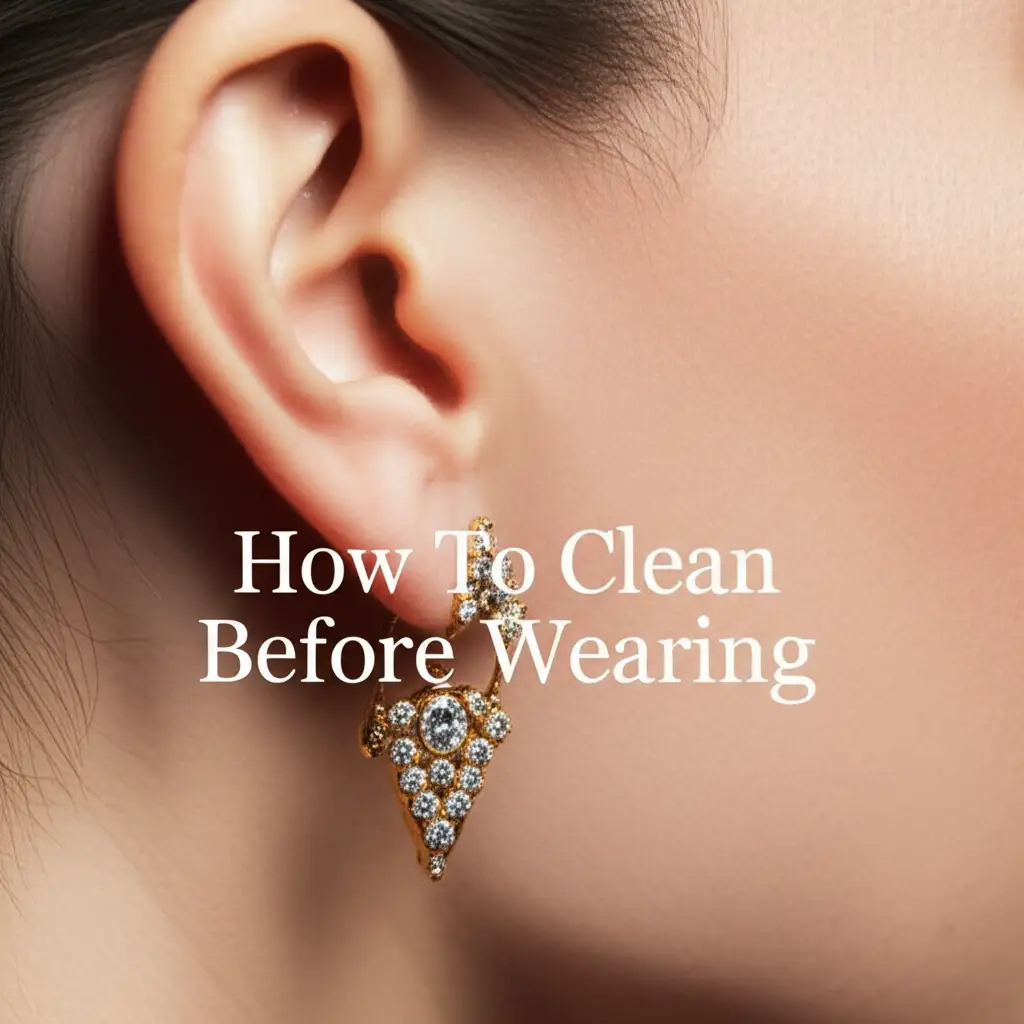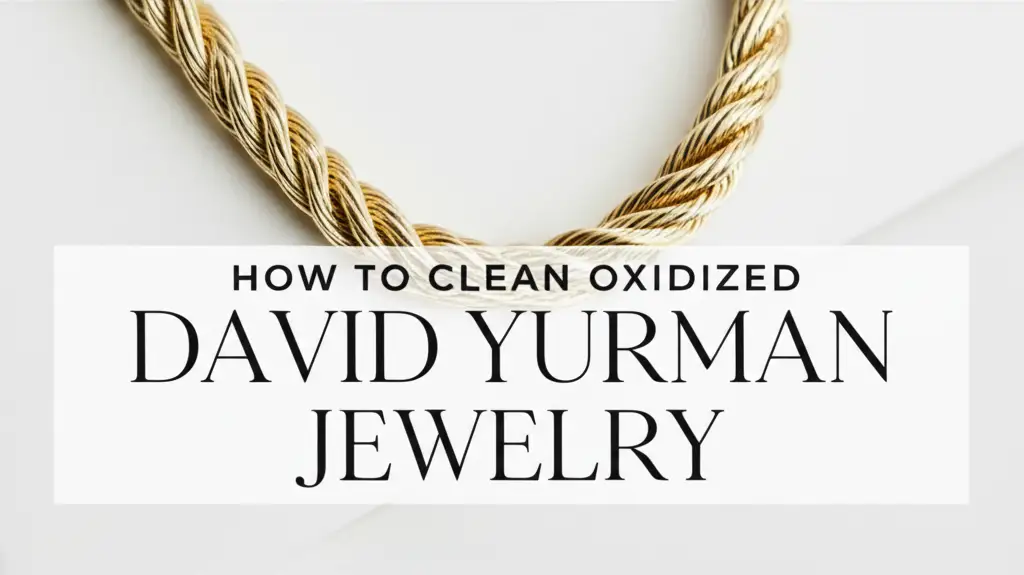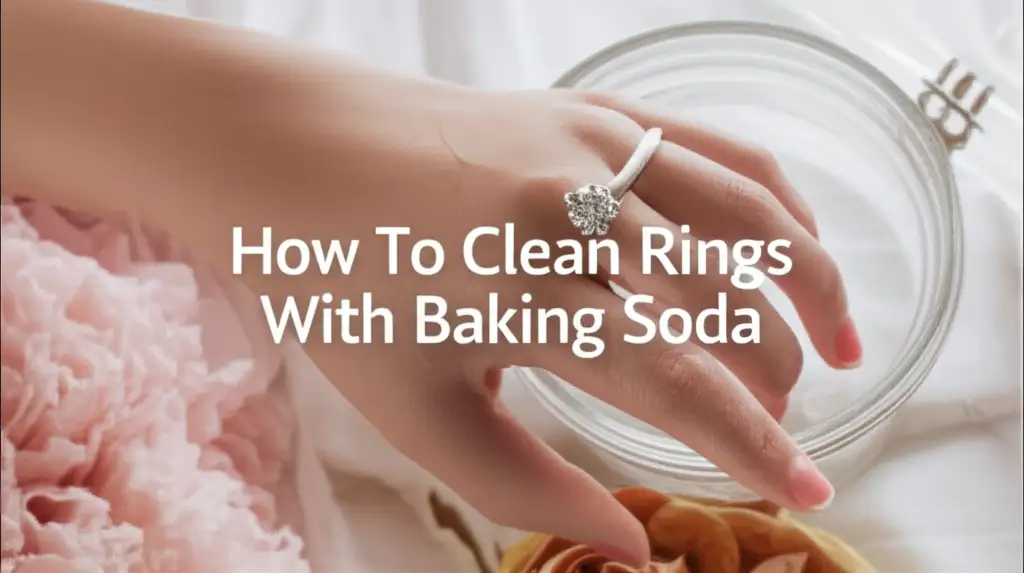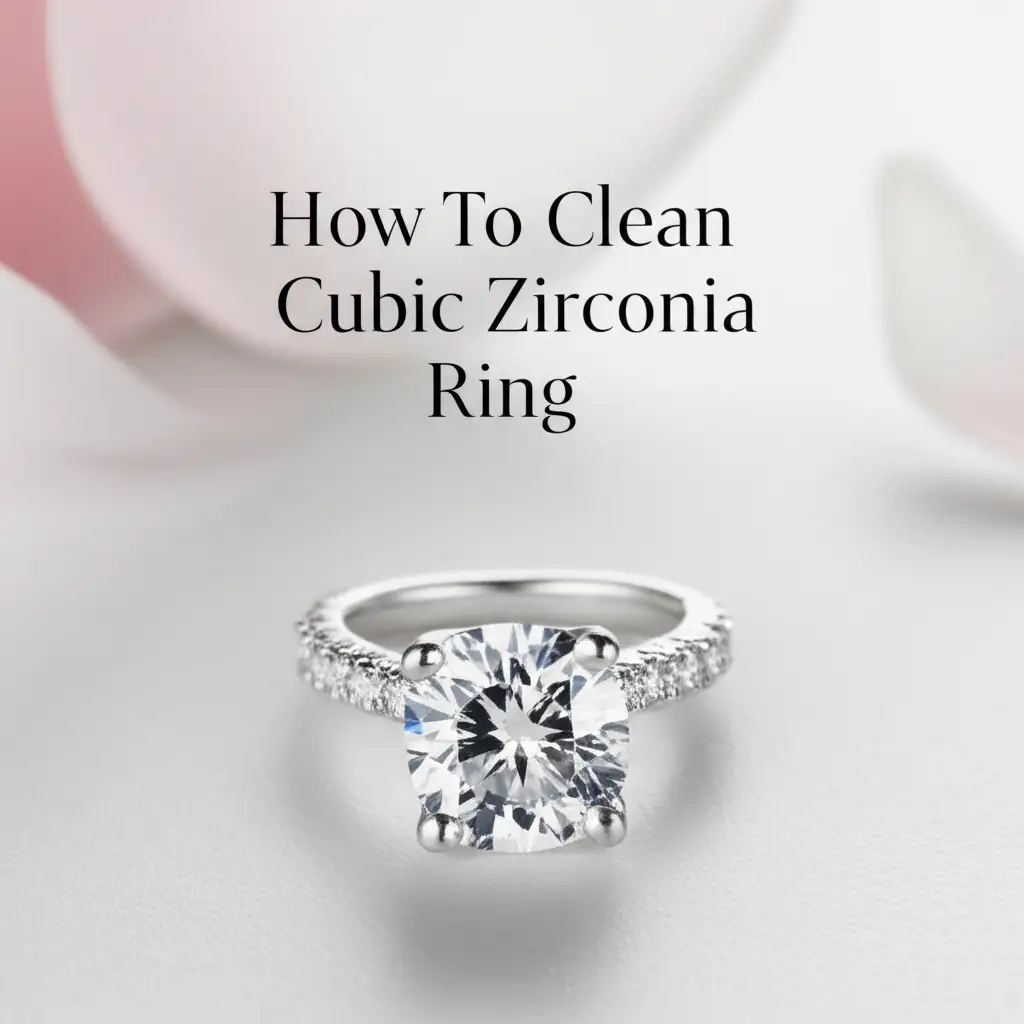· Jewelry Care · 13 min read
How To Clean Earrings Before Wearing

Clean Earrings Before Wearing: A Must for Healthy Ears
Putting on a new pair of earrings, or rediscovering an old favorite, feels wonderful. But have you ever stopped to think about what might be clinging to them? Dust, oils, dead skin cells, or even invisible bacteria can hide on your jewelry. Wearing dirty earrings can lead to discomfort, irritation, or worse, an infection. That sparkle you love can come with a hidden cost if you are not careful.
Cleaning earrings before wearing them is a simple but vital step. It protects your ears and keeps your jewelry looking its best. This guide will walk you through the essential reasons to clean your earrings. I will show you exactly how to do it for different materials. We will cover basic tools, specific care for metals and gemstones, and common mistakes to avoid. Get ready to wear your earrings with confidence and comfort.
Takeaway:
- Prioritize Hygiene: Always clean earrings to prevent skin irritation and infections.
- Use Gentle Products: Mild soap and warm water are safe for most materials.
- Tailor Cleaning: Different materials like gold, silver, or pearls need specific care.
- Dry Completely: Ensure earrings are fully dry to prevent moisture damage and bacterial growth.
- Store Properly: Keep cleaned earrings in a clean, dry place to maintain their sparkle.
Clear, Concise Answer to the Main Query:
To clean earrings before wearing, gently wash them with mild soap and warm water, or use a jewelry cleaning solution specific to the material. For disinfection, wipe posts with rubbing alcohol. Always dry thoroughly before wearing to prevent irritation and ensure hygiene.
Why Cleaning Earrings Before Wearing Matters for Ear Health
Many people overlook the simple act of cleaning their earrings. This small oversight can lead to significant problems for your ear health. Your earlobes are delicate. They are susceptible to irritation and infection from dirty jewelry. Think about all the places your earrings have been. They sit in drawers, on dressers, or even in a jewelry box. They collect dust, dirt, and oils from your skin. Even new earrings are not perfectly clean. They have been handled by many people before reaching you.
Wearing earrings with dirt or bacteria can cause itching, redness, and swelling. For sensitive skin, this can trigger allergic reactions. The small puncture in your earlobe, whether old or new, is an open door for germs. A dirty earring post can push bacteria directly into this opening. This significantly increases the risk of an infection. Cleaning your earrings helps remove these unseen threats. It ensures your earlobes stay healthy and happy. It is a quick step that saves you from discomfort and potential medical issues. I always make sure to clean mine before wearing them.
Essential Tools and Supplies for Earring Cleaning
You do not need many fancy tools to clean your earrings effectively. Most items are likely already in your home. Having the right supplies makes the cleaning process easy and safe. I always gather my tools before I start. This prevents me from having to stop in the middle.
First, you will need a small bowl or container. This is for soaking your earrings. Next, get a mild liquid soap. Dish soap without harsh chemicals or lotions works well for most metals. You can also use a specialized jewelry cleaner. Make sure it is safe for the specific material of your earrings. A soft-bristled toothbrush or a cotton swab is great for gently scrubbing. These help reach small crevices. Finally, you will need a soft, lint-free cloth for drying. A microfiber cloth is ideal. For disinfecting, rubbing alcohol or hydrogen peroxide is necessary. These steps ensure your earrings are not just clean, but also sanitized. Gather these items. You will be ready to give your earrings the care they deserve.
- Small bowl or container: For soaking.
- Mild liquid soap: Like dish soap (lotion-free) or a gentle hand soap.
- Soft-bristled toothbrush or cotton swabs: For gentle scrubbing.
- Soft, lint-free cloth: Microfiber cloths work best for drying and polishing.
- Rubbing alcohol (isopropyl alcohol) or hydrogen peroxide: For disinfection.
- Warm water: Not hot, just warm.
General Cleaning Steps for Most Earrings
Cleaning most types of earrings follows a simple, effective routine. This method is safe for many common materials, including gold, sterling silver, and stainless steel. Always remember to be gentle. Harsh scrubbing can damage delicate pieces. I use this method for my everyday earrings.
Start by preparing your cleaning solution. Fill a small bowl with warm water and add a few drops of mild liquid soap. Stir the water gently to create some suds. Place your earrings into this solution. Let them soak for 10-15 minutes. This helps loosen any dirt, oil, or product buildup. After soaking, take one earring out. Use a soft-bristled toothbrush or a cotton swab. Gently scrub all surfaces of the earring. Pay extra attention to the posts and backs. These areas touch your skin most directly. Rinse the earring under cool, running water. Make sure all soap residue is gone. Finally, dry the earring completely with a soft, lint-free cloth. Ensure no moisture remains, especially in tiny crevices. This simple process makes your earrings ready and safe to wear.
- Prepare the solution: Fill a small bowl with warm water and a few drops of mild soap.
- Soak earrings: Place earrings in the solution for 10-15 minutes.
- Gentle scrub: Use a soft-bristled toothbrush or cotton swab to clean surfaces, especially posts and backs.
- Rinse thoroughly: Rinse under cool running water to remove all soap.
- Dry completely: Use a soft, lint-free cloth to dry completely.
Cleaning Specific Earring Materials Safely
Different earring materials require different cleaning approaches. What works for gold might harm a delicate pearl. Knowing the specific needs of your earrings helps preserve their beauty and integrity. I have learned this through experience, often the hard way! Always identify your earring material first.
Gold and Silver Earrings
Gold and sterling silver are popular choices for earrings. They are durable but can tarnish or collect grime. For these metals, a mild soap and warm water soak works wonders. You can use the general cleaning steps mentioned earlier. For stubborn tarnish on silver, a special silver cleaning cloth can help. Avoid harsh chemicals or abrasive cleaners. These can scratch the surface or damage the finish. If your earrings have turned black due to tarnish, a gentle polish designed for silver can restore their shine. Always rinse well and dry completely after cleaning.
Costume and Fashion Jewelry
Costume jewelry often uses plated metals, glass, plastic, or glued-on elements. These pieces are typically more delicate. They can be easily damaged by soaking or strong cleaners. Instead, use a damp, soft cloth to wipe them clean. Do not submerge them in water. Water can get trapped inside, causing rust or damaging the glue. For quick disinfection, you can lightly wipe the posts with an alcohol-dampened cotton swab. Dry immediately afterward. This gentle approach keeps your fashion earrings looking good without causing damage.
Gemstone Earrings (Diamonds, Pearls, Opals, etc.)
Gemstone earrings need careful attention. The cleaning method depends on the hardness and porosity of the stone.
- Diamonds, Sapphires, Rubies: These are hard stones. They can handle a mild soap and warm water solution. Use a soft brush to remove dirt.
- Pearls, Opals, Emeralds, Turquoise: These are softer or more porous. They can be damaged by water, heat, or chemicals. Never soak pearls or opals. Simply wipe them gently with a damp, soft cloth. Avoid harsh soaps or alcohol on these stones. Their natural luster can be dulled or damaged.
- Other stones (Amethyst, Topaz, Garnet): Most other stones are safe with mild soap and warm water. However, always double-check specific care instructions if you are unsure. When in doubt, a gentle wipe with a dry or slightly damp cloth is the safest bet.
Wooden, Bone, or Organic Materials
Earrings made from natural materials like wood, bone, shells, or horn require very specific care. These materials can absorb water, swell, crack, or lose their finish. Avoid water and harsh chemicals completely. Instead, wipe these earrings with a dry, soft cloth. For wood, a tiny amount of natural oil (like jojoba oil) can help maintain its luster. Always ensure these materials are completely dry before storage. This prevents mold or mildew growth. Proper care extends the life of these unique pieces.
Hypoallergenic and Titanium Earrings
Hypoallergenic materials like titanium, surgical stainless steel, or niobium are excellent for sensitive ears. Cleaning them is usually very straightforward. Mild soap and warm water work perfectly. For extra sanitation, you can use rubbing alcohol on the posts. These materials are generally very durable and resistant to tarnish or reactions. However, always dry them thoroughly. This prevents any water spots and ensures complete hygiene before wearing. Their simplicity makes them easy to care for and a joy to wear.
Advanced Cleaning and Disinfection Tips
Sometimes, a simple soap and water wash is not enough. For truly sanitized earrings, especially if they are new or you are prone to infections, advanced disinfection is wise. I always take this extra step for my most sensitive pieces. It provides peace of mind.
Rubbing alcohol (isopropyl alcohol) is your best friend for disinfecting earring posts and backs. After cleaning with soap and water and drying, dip a cotton swab in rubbing alcohol. Wipe down the entire post and the back of the earring. Let it air dry completely. Alcohol quickly evaporates and kills bacteria. Hydrogen peroxide is another option. It can also disinfect effectively. However, use it carefully on certain metals or plated jewelry. It might cause discoloration over time. Always test a small, inconspicuous area first if you are unsure.
Ultrasonic cleaners are also available. These use sound waves to agitate a cleaning solution. They can deeply clean intricate jewelry. But be careful! Never use an ultrasonic cleaner on delicate gemstones like pearls, opals, or emeralds. It can damage their structure or cause them to crack. Always read the manufacturer’s instructions for both your cleaner and your jewelry. For most everyday earrings, simple alcohol disinfection is perfectly adequate. It offers strong protection without the risk.
Common Mistakes to Avoid When Cleaning Earrings
Cleaning earrings seems simple, but common mistakes can damage your jewelry or irritate your ears. Knowing what not to do is just as important as knowing what to do. I have made some of these mistakes myself in the past!
One big mistake is using harsh chemicals. Bleach, ammonia-based cleaners, or strong abrasive pastes can strip finishes, etch surfaces, or even dissolve delicate stones. Always stick to mild soaps or cleaners specifically designed for jewelry. Another common error is soaking delicate materials. Organic materials like wood or porous gemstones like pearls should never be submerged. Water can cause swelling, cracking, or dullness. Always dry your earrings completely. Leaving them wet, especially in crevices, can lead to water spots, tarnish, or even mold growth. Proper drying is crucial for both hygiene and preservation. Using abrasive cloths or brushes can scratch soft metals like gold or silver. Always opt for soft cloths and gentle brushes. Finally, sharing earrings without proper cleaning is a major hygiene risk. Even if they look clean, they can transfer bacteria. Always clean thoroughly before sharing or wearing. Avoid these pitfalls to keep your earrings beautiful and your ears healthy.
Storing Earrings for Long-Term Cleanliness
Proper storage is key to keeping your earrings clean between wears. It helps prevent tarnish, dust accumulation, and physical damage. Many people just toss their earrings into a drawer. This is a common mistake that can lead to tangled chains, scratches, and dirty jewelry. I learned the importance of good storage after finding my favorite silver earrings always tarnished.
First, always store earrings in a clean, dry environment. Humidity can accelerate tarnishing and promote bacterial growth. Consider using anti-tarnish strips or pouches for sterling silver pieces. These absorb moisture and chemicals in the air. Store earrings individually or in separate compartments. This prevents them from scratching each other. Soft fabric-lined jewelry boxes or pouches work well. For stud earrings, a specialized earring organizer or a small foam insert can keep pairs together and posts protected. Hanging earring organizers are great for dangles and hoops. They keep everything visible and untangled. Before storing, make sure your earrings are completely dry. Even a tiny bit of moisture can cause problems over time. Good storage practices reduce the need for intensive cleaning. It also extends the life and sparkle of your cherished earrings.
FAQ Section
Can I use rubbing alcohol on all earrings?
Rubbing alcohol is safe for disinfecting posts and backs of most metal earrings, especially gold, silver, stainless steel, and titanium. Avoid using it on porous gemstones like pearls, opals, or emeralds, as it can damage their surface or dull their luster. Always test a small area if unsure.
How often should I clean my earrings?
You should clean your earrings every time before wearing them, especially if they are new or have been stored for a while. For frequently worn earrings, a quick clean once a week is good. Deep cleaning every few months helps maintain their shine and hygiene.
What if my ears get irritated after wearing earrings?
If your ears get irritated, it might be due to dirty earrings, an allergic reaction to the metal, or a new piercing healing. Stop wearing the earrings. Clean your ears and the earrings. If irritation persists, consult a doctor. Consider switching to hypoallergenic materials like titanium.
Can I use toothpaste to clean earrings?
No, do not use toothpaste to clean earrings. Toothpaste contains abrasive particles that can scratch metals like gold and silver, and dull the surface of gemstones. Stick to mild soap, water, or specialized jewelry cleaners for safe cleaning.
Is it okay to share earrings after cleaning them?
It is not recommended to share earrings, even after cleaning them. While cleaning reduces germs, it does not guarantee complete sterilization. Sharing can still pose a risk of transferring bacteria or viruses, especially if there are any tiny breaks in the skin.
How do I clean new earrings before wearing?
Even new earrings need cleaning. They have been handled and exposed to various environments. Wipe the posts and backs with rubbing alcohol or a mild soap and water solution. Rinse thoroughly and dry completely before inserting them into your ears.
Conclusion
Taking good care of your earrings makes a big difference. It is not just about keeping them shiny. It is about protecting your ear health. I hope this guide helps you feel confident in how to clean earrings before wearing them. You now know the simple steps and tools needed. You also understand the specific care for different materials.
Making earring cleaning a regular part of your routine is a smart choice. It helps prevent common issues like irritation and infections. Your earrings will look better, last longer, and feel more comfortable. Always remember to be gentle, choose the right cleaner, and dry thoroughly. Your ears will thank you. Wear your favorite pieces with pride, knowing they are clean and safe. Enjoy every moment of sparkle!
- earring cleaning
- jewelry hygiene
- prevent ear infections
- jewelry care
- hypoallergenic cleaning




